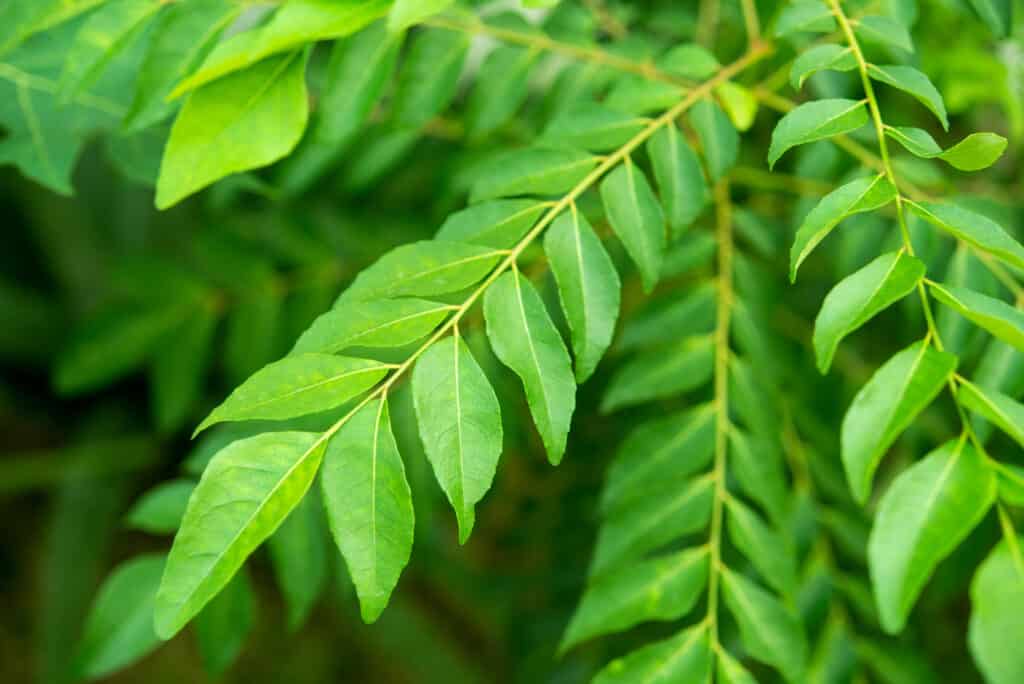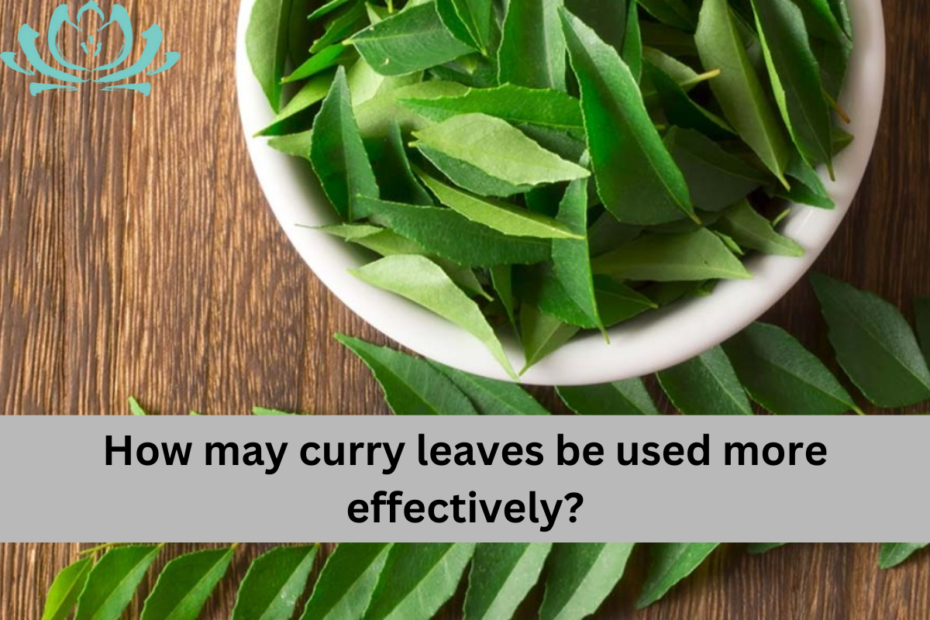How may curry leaves be used more effectively?:- Curry tree (Murraya koenigii) leaves. The leaves of this Indian tree are used medicinally and culinaryly. They smell great and taste citrusy. Curry leaves are not curry powder, but they are often added to this spice mixture to flavour curries, rice dishes, and dals. They’re a versatile culinary herb and have many health benefits due to their powerful plant compounds.
How may curry leaves be used more effectively?
Curry leaves have 9 impressive uses and benefits.
1. High in potent plant compounds
- Curry leaves contain antioxidants like alkaloids, glycosides, and phenolic compounds, making this fragrant herb healthy.
- Curry leaves contain linalool, alpha-terpinene, myrcene, mahanimbine, caryophyllene, murrayanol, and alpha-pinene, according to research.
- Many of these compounds are antioxidants. Antioxidants are vital to health and disease prevention.
- They remove free radicals and reduce oxidative stress, which can lead to chronic diseases.
- Numerous studies have shown that curry leaf extract is highly antioxidant.
- Oral antioxidant-rich curry leaf extract protected rats from medication-induced stomach damage and reduced oxidative stress compared to a placebo group.
- Other animal studies have shown that curry leaf extract may protect the nervous system, heart, brain, and kidneys from oxidative damage.
- Human research on curry leaf antioxidants is scarce.
- However, curry leaves contain plant compounds that may boost health by providing antioxidant protection.
2. May lower heart disease risk.
- Heart disease risk factors include high cholesterol and triglycerides. These risk factors may be reduced by eating curry leaves.
- Curry leaves may improve heart health in several ways, according to research.
- In animal studies, curry leaf extract may lower cholesterol and triglycerides.
- Oral curry leaf extract at 136 mg per pound (300 mg per kg) of body weight per day significantly lowered cholesterol and triglycerides in high-fat-diet-induced obese rats for 2 weeks.
- These results were linked to the leaves’ high mahanimbine content.
- Mahanimbine prevented diet-induced complications like high blood lipids, fat accumulation, inflammation, and oxidative stress in mice on a high-fat diet for 12 weeks.
- Other animal studies show curry leaf extract lowers cholesterol.
- These findings are promising, but human research is lacking. Therefore, more research is needed to confirm curry leaves’ potential benefits.
3. May be neuroprotective
- Curry leaves may protect your nervous system, including your brain, according to research.
- Alzheimer’s disease causes neuron loss and oxidative stress.
- Curry leaves may protect against neurodegenerative diseases like Alzheimer’s, according to research.
- In mice, high doses of curry leaf extract improved brain cell levels of brain-protecting antioxidants like GPx, GRD, and SOD.
- The extract also reduced brain cell oxidative damage and Alzheimer’s disease enzymes.
- Another study found that 15 days of oral curry leaf extract improved memory scores in young and old mice with induced dementia.
- This area needs more human research before strong conclusions can be drawn.
Also Read:-Over 100% olive oil prices drive cooking oil robbery.

How may curry leaves be used more effectively?
4. Possible anticancer effects
- Curry leaves contain potent anticancer compounds.
- A test-tube study found that three curry extract samples from curry leaves grown in different Malaysian locations inhibited the growth of an aggressive breast.
- Curry leaf extract reduced cell viability and growth in two breast cancer cell types in another test tube study. The extract also killed breast cancer cells.
- Curry leaf extract is also toxic to cervical cancer cells in test tubes.
- Curry leaf extract reduced tumour growth and lung metastasis in mice with breast cancer.
- Additionally, curry leaf alkaloid girinimbine kills colon cancer cells in test tubes (18Trusted Source).
- In addition to girinimbine, curry leaves contain antioxidants like quercetin, catechin, rutin, and gallic acid, which fight cancer.
- Curry leaves contain compounds that may fight cancer cells, but human trials are needed.
5. 8 other benefits.
Curry leaves may also improve health in these ways:
5. Helps control blood sugar.
- Curry leaf extract has been shown to lower blood sugar and prevent diabetes symptoms like nerve pain and kidney damage in animals.
6. May relieve pain.
- In rodents, curry extract oral administration significantly reduces induced pain.
7. Reduces inflammation.
- Curry leaf extract reduces inflammation-related genes and proteins in animals due to its many anti-inflammatory compounds.
8. Has antibacterial properties.
- Curry leaf extract inhibited Corynebacterium tuberculosis and Streptococcus pyogenes in test tubes.
- Test-tube and animal research has shown these benefits. Human studies are needed to confirm these benefits.
9. Easy diet addition
- Curry leaves have long been used in Indian cooking. They have a subtle citrus-nuttiness flavour.
- The leaves add a rich flavour to meat dishes, curries, and other Indian dishes.
- Some specialty stores sell them fresh, but grocery stores sell them dried in the spice section.
- Curry leaves soften when cooked and are sautéed in oil or butter before adding to dishes.
Here are some curry leaf cooking uses:
- Add ghee and softened curry leaves to any dish after sautéing them in high heat.
- Use curry leaves to freshen broths.
- Blend fresh or dried curry leaves with red chilli, turmeric, and cumin seeds for a flavorful seasoning.
- Diced or crumbled dried curry leaves add flavour to any savoury dish.
- Cook curry leaves in hot oil and dip or top crusty bread with the infused oil.
- Add curry leaves to sauces and chutneys.
- Add chopped curry leaves to savoury breads and crackers.
- Curry leaves are versatile and can be used in many ways, so don’t be afraid to experiment with this flavorful ingredient.
If you like this article about How may curry leaves be used more effectively? Please share this article with your friends and family members.



